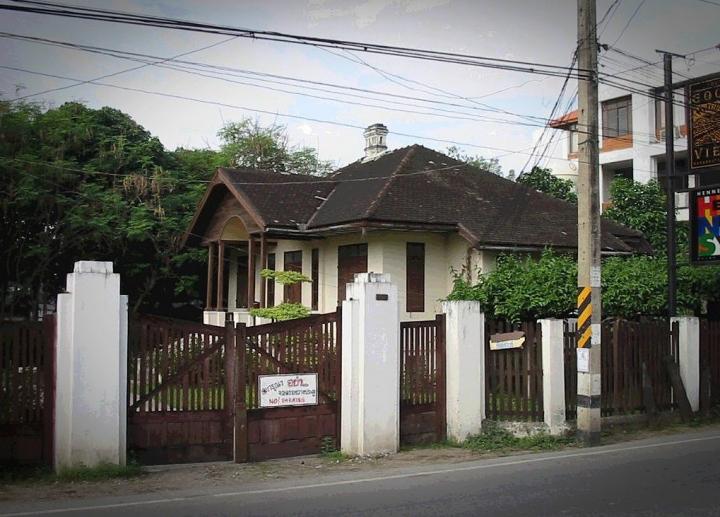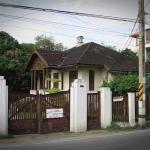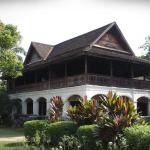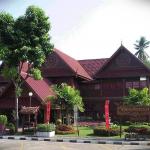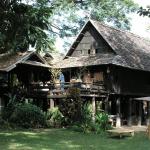Chiang Mai is a city with over 710 years of documented history. This delightful northern city boasts of a rich culture and traditions that have been handed down the centuries. The history of Chiang Mai makes for an interesting read.
Similar to other ancient cities around the world, the effects of modern development have slowly eroded many traditional northern Thai beliefs and practices. “Khoom Luang” is the name given to the residences of Chiang Mai’s royalty and their distinct characteristics reflect the traditional lifestyle of the northern people, which is now in danger of extinction.
When King Mengrai established Chiang Mai as the second capital of the Lanna Kingdom, the town was designed in a square shape surrounded by moats. The four ramparts at each corner have different name, locals call them “Jaeng”, which meaning corner, and inside the city wall, the area was designed into different zones.
The northwest area of “Jaeng Huarin” belonged to the King of Chiang Mai and the land at the north near “Chang Puak Gate” was the administrative zone. In the northeast, the land close to “Jaeng Sriphum” belonged to the King. In the eastern part close to “Thapae Gate” was the zone for commerce, while the industrial zone was located in the southeast near “Jaeng Ka-Tam.”
The houses of the nobility were located in the south near “Chiang Mai Gate”, and in the southwest near “Suan Proong Gate” was an area known as the town’s evil zone, it was a graveyard. It’s also used for executions. The citizenry lived in the west near “Suan Dork Gate.”
Apart from temples, visiting residences of the royalty in Chiang Mai can be an interesting experience for students of history and visitors seeking to discover the Lanna Kingdom’s architectural heritage. Bicycles and motorcycles are a convenient way of exploring these residences.
“Khoom Luang” is the residence of the royalty built mostly of teakwood and set in a very large compound. The compound houses an office for conducting the affairs of the city, a kitchen area, attendant rooms, garage, stable and a corral for elephants.
According to ancient belief when the residence’s owner passed away, the buildings had to be demolished and the land offered to the temple.
The Jao Burirat Residence was built in between 1889-1893 and owned by Jao Maha In, the grandson of Jao Come Gun, the third prince of Chiang Mai of the Jao Jed Ton family. The residence was part of the family heritage until the Kittibut family bought it. The residence is presently owned by Ms. Riang-Pan Tipayamontond and Mr Jultat Kittibut.
The architecture was created combining traditional northern and colonial styles. The first floor has thick rendered brick walls with a round arched arcade on the north facade. The second floor and roof structure were built of teak. This residence is located on Ratchadamnoen Road at the corner of the intersection opposite Wat Pun Tao temple.At present it is home to the Lanna Architecture Center of the Faculty of Architecture, Chiang Mai University.
Just across the road from the Jao Burirat residence is Wat Pun Tao temple on Phrapokklao Road. It’s worth a visit. A large conspicuous teakwood building stands in front of the temple. It used to be the former resident of the fifth ruler of Chiang Mai from 1847 to 1854. The prominent gable woodcarvings of peacock figures are decorated with in laid mosaics. The peacock, in Lanna and Burmese culture, stands for the royalty and the king.
Khoom Klang Wiang Residence, is a magnificent old European style building directly behind the Three Kings Monument, located in the middle of the city on Phrapokklao Road. It was the birthplace of Queen Dara Rassamee, princess of Chiang Mai during the reign of King Rama V.
Dr. Daniel Mcgullvary, the first missionary in Chiang Mai wrote in his memories: “The throne hall of the Royal Residence is magnificent and dazzling. The ruler sits on a throne, the prince, princess and noblemen sit in the front looking warm and wealthy just like the Royal Palace in Bangkok.”
This residence was built in 1873. It served as the abode of the Chiang Mai ruler. Later it was turned into the City Hall. In 1924 it was rebuilt and used as a tax office. Many years later, the Chiang Mai municipality assisted by university and residents of Chiang Mai converted it into the City Arts and Cultural Center. It’s now a public property.
Khoom Jao Kaew Moon Muang is located on Phrapokklao Road. The contemporary Victorian style building was built in 1918. The British-American Tobacco Company rented the building from the heir of the ruler of Chiang Mai who later donated the building to the Ministry of Finance which used it as the office of the Chiang Mai Tobacco Company. The company is now renovating the building after which it would be turned into a museum.
On the same road is another residence named “Khoom Kaew Palace”, which is set in the compound of the Vista Hotel. The buildings are made of teakwood adorned with fine woodcarving decorated on the gables. At present, the residence is owned by the Vista Company and is open to the public for traditional Khantoke dinner banquets and cultural performances. It’s been blessed with a new name, the “Khoom Kaew Palace 100 Years”.
Darapirom Palace: After His Majesty King Rama the V passed away in 1910, Queen Dara Rassamee returned to Chiang Mai and decided to spend her remaining years in her birth-place. The Darapirom Palace was built for her, it was her last residence and she used to work from there. She loves this palace very much and remained there until she passed away in 1936. The palace was built predominantly with teakwood in a combination of Western-Lanna style. The palace is located in Dara Rassamee Police Patrol Camp in Maerim district. At present it serves as a museum and is open to public.
Some of Chiang Mai’s royal residences are located in the heart of the city waiting to be discovered. Some of them are dilapidated and beyond repair, while some have new owners. Visitors can still watch them from the outside-for example Khoom Wong Tawan, the former residence of the ninth ruler of Chiang Mai, located on the eastside of the Ping River on Faham Road.
Royal residences are not just simple living places, but are of great historical significance to the local people as well as all scholars of history. They are priceless treasures of an ancient culture.
 ThingsAsian
ThingsAsian